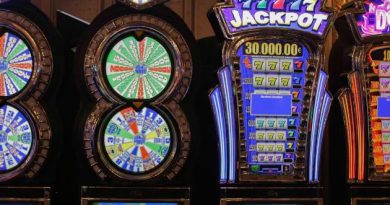What Is RTP and Why It’s Important When Playing Slots
Image: Pixabay
In the online gambling industry, it is well known that slots are the most popular type of game amongst players – mostly because they require very little skill and are considered the most lucrative.
In comparison to other casino games with more complicated rules and wagering systems, online slots are very easy to understand and operate, which is one of the primary reasons they are so popular with players worldwide.
To play online slots for real money may appear simple, but there is a lot of complicated technology behind them that is responsible for their operations.
One, in particular, is very crucial to which slot machine a player will choose. This is called RTP or Return To Player and, as the name suggests, it refers to what percentage of a player’s money they could potentially win over a period of time and in accordance with some other variables that come into play.
Let’s learn more about it.
RTP Explained
RTP (return to player) is an abbreviation for return to player and is a percentage figure that is used to illustrate the amount of money that has been returned to a player in relation to the amount of money that has been deposited into the game.
For Instance, if a specific slot machine has received a sum of $100,000 in wagers and has a return to player (RTP) rate of 98.7 percent, this means that the game has returned $98,700 out of the total of $100k it has taken in over a particular time frame.
It is vital to note that RTP does not represent a specific player’s odds of winning while playing a specific slot machine. The history of the slot machine is displayed so that players may gain a better understanding of how the machine has performed for them in the past.
This figure is derived from the reels spinning many times, typically millions, and should not be taken as a guarantee. Every scenario is possible in a short period of time, and the reels could have hundreds of thousands of spins throughout this time.
This is why playing slot games is so thrilling. A game that pays out precisely $987 back after 100 spins at $1 would be uninspiring to play, even if it was profitable.
It’s Complicated!
An RTP setup is challenging and grows more complex the harder a slot game is. If a game has several characteristics and pay lines, the creators must find out how to make the game return the expected percentage.
In short, a slot is always structured to return a proportion of all the money being put into it. Although the RTP distribution might differ, a machine with a 97 percent RTP will return 97 percent of all bets over unlimited spins.
The Main Difference Between RTP and Variance
RTP is sometimes confused with a game’s volatility but they are not the same thing.
Variance is a term that describes how the RTP of a game is calculated. Lower volatility slots are designed to provide you with many modest wins, allowing you to manage your bankroll and experience what it’s like to win without going broke.
Higher volatility games, though, normally have a higher percentage of their RTP located in their additional features (such as bonus or free spins) and can produce some huge payouts. However, to counterbalance these high winnings, the base game of these slots has not as many smaller payouts.
That is to say, every slot game with a high RTP is not always going to yield a profit.
Generally, games with a higher RTP are preferable to those with a lower percentage, but if your game of choice is extremely volatile, you may need to spin thousands of times before getting near to the RTP percentage of said game.
AUTHOR BIO: Vinod Gill is a writer who specializes in writing content on sports and tech gaming subjects. He is a Digital Marketing Consultant, Blogger, and Co-Founder of digital marketing course.




